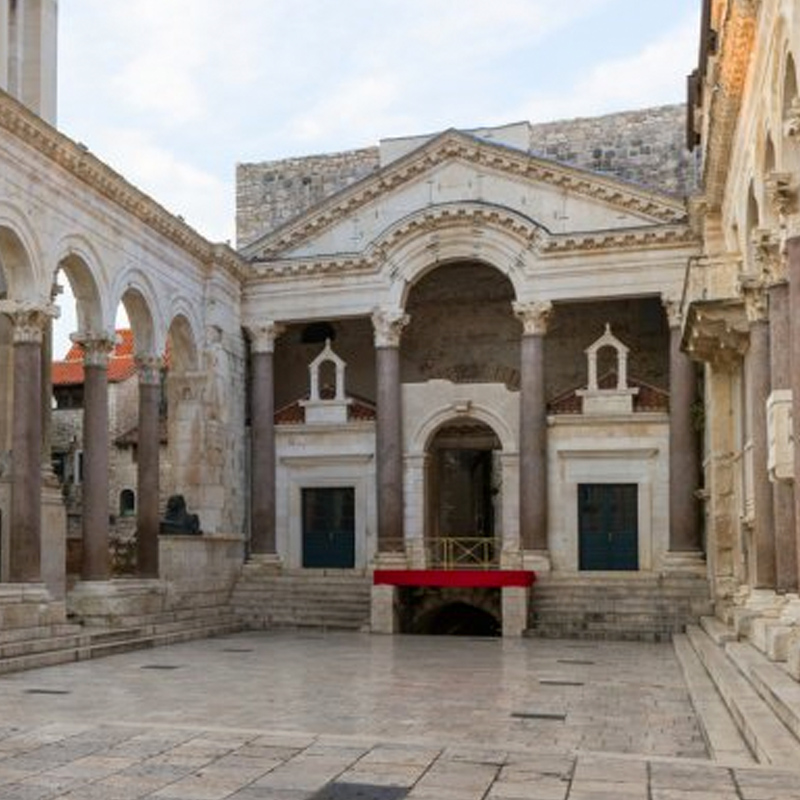The Diocletian Palace in Split, Croatia, was built by the Roman emperor Diocletian at the end of the 4th century AD and is one of the best preserved buildings of the period, which has undergone only a few minor changes since its construction. The peristyle is located in the central part of the building and was built using limestone extracted from the neighboring island of Brazza.

PERISTYLE OF THE DIOCLETIAN PALACE - SPLIT – CROATIA
THE WORK
THE PROBLEMS OF RESTORATION
Most of the calcareous stones that make up the peristyle were covered with a fairly thick black crust (from 0.5 to 10 mm). The incrustations were held together by a chalky matrix that incorporated particles of various kinds, such as atmospheric particulate matter, pollen, oxalates, bituminous and carbonaceous substances (responsible for the blackish gray color), calcite fragments of primary origin deriving from the dissolution of CaCO3 and subsequent re-precipitation . The transformation of calcite into gypsum and the formation of new crystals had created strong tensions, causing first the de-coarsening of the stone below the black crust and subsequently causing detachment in some points.
THE LASER
Laser technology was used in the peristyle for the first time in Croatia. For the preliminary experimental part, an SFR laser (Short Free Running) was used with pulse duration 50-100µs. For thin crusts of 0.5 mm an energy of 400mJ with fluence of about 13 J / cm2 proved to be sufficient for removal, while with crusts of 2 mm it was necessary to increase the energy to 1600mJ with fluence of about 22 J / cm2
Client: Croatian Restoration Center

